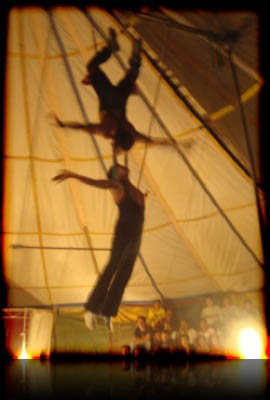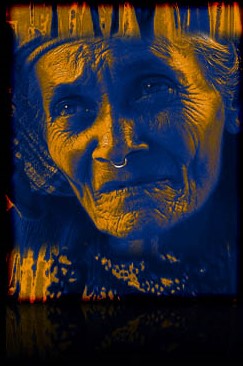Obesity, Health Advocacy and the Imaginary Geographies of Illness
DOI:
https://doi.org/10.25071/1913-5874/37330Abstract
The most common way to begin a commentary on the obesity epidemic is to rehearse a series of statistics that are meant to support the idea that obesity rates have become a “crisis by any standard” (Pomeranz 186). Then, typically, experts will list the chronic health problems associated with obesity as a means of reinforcing the semiotic applicability of the word “epidemic” to the ostensibly normative issue of there being too much weight on people’s bones. Rather than performing these by now familiar rhetorical moves, my point of departure will be to recognize that although the material basis of obesity panic is the social reality represented by the gradual bloating of these numbers, the obesity epidemic is more aptly to be understood as a particularly speculative and instrumentalist “epidemic of signification,” to use a term from Paula Treichler’s study of AIDS and the intersection of science and morality (1). Indeed, at no point in human history has the collective weight of a population possessed the gravity or borne the intensity of political consideration that it does in our time. At a time in which the global flow of populations and the accelerated global movement of capital destabilizes appeals to the familiar paternalism of the nation-state, fatness and the symbolic weight of an increasingly fat body politic feeds a renewed state concern with social reproduction and public concern over the unsustainability of contemporary life under our increasingly banal conditions of crisis.
References
Baudrillard, Jean. “Structures of Interior Design.” Ed. Ben Highmore. 2002. The Everyday Life Reader. New York, NY: Routledge.
Berlant, Lauren. “Slow Death (Sovereignty, Obesity, Lateral Agency).” Critical Inquiry 33 (Summer 2007): 754-780.
Boon, Caitlin S. and Fergus M. Clydesdale. “A Review of Childhood and Adolescent Obesity Interventions.” Critical Reviews in Food Science and Nutrition Vol. 45, Issue 7-8 (2005): 511-525.
Booth, Katie M., Megan M. Pinkston and S. Carlos Poston. “Obesity and the Built Environment. Journal of the American Dietetic Association 105, Issue 5, Supplement 1 (May 2005): S110-7.
Brownell, Kelly. “Overfeeding the Future.” Feeding the Future: From Fat to Famine. Ed. Andrew Heintzman and Evan Solomon. Toronto: House of Anansi Press Inc., 2004.
De Certeau, Michel. “The Practice of Everyday Life.” The Everyday Life Reader. Ed. Ben Highmore. New York: Routledge, 2002.
Deleuze, Gilles. “Postscript to Societies of Control.” Trans. Martin Joughin. Negotiations: 1972-1990. New York: Columbia University Press, 1995.
Drewnowski, Adam, C.D. Rehm and D. Solet. “Disparities in obesity rates: analysis by ZIP code area.” Social Science and Medicine 65 (Dec. 2007): 2458-63.
Dupuis, Melanie and Julie Guthman. “Embodying Neoliberalism: economy, culture, and the politics of fat.” Environment and Planning D: Society and Space Vol. 24 (2006): 427-448.
Edelman, Lee. No Future: Queer Theory and the Death Drive. Durham: Duke University Press, 2004.
Foucault, Michel. Security, Territory, Population: Lectures at the College De France 1977-1978. Ed. Michel Senellart. Trans. Graham Burchell. New York: Palgrave MacMillan, 2007.
Gard, Michael. “An elephant in the room and a bridge too far, or physical education and the ’obesity epidemic.’ Body Knowledge and Control: Studies in the Sociology of Physical Education and Health. Ed. John Evan, Brian Davies and Jan Wright. New York: Routledge, 2004.
Gard, Michael and Jan Wright. The Obesity Epidemic: Science, Morality and Ideology. New York: Routledge, 2005.
Harvey, David. Spaces of Hope. Berkeley: University of California Press, 1999.
Hayne, Cheryl L., Patricia A. Moran and Mary M. Fod. “Regulating Environments to Reduce Obesity.” Journal of Public Health Policy Vol. 25, No. 3/4 (2004): 391-407.
Herrick, Clare. “Risky bodies: Public health, social marketing and the governance of obesity.” Geoforum. 38 (2007): 90-102.
“The shape of things to come.” The Economist (US) 369.8354 (Dec 13, 2003): 11UK. CPI.Q (Canadian Periodicals). Gale. McMaster University Library. 10 Jan. 2009
Lees, Simon J. and Frank W. Booth. “Sedentary death syndrome.” Canadian Journal of Applied Physiology 29(4) (2004): 447-460.
Louv, Richard. Last Child in the Woods: Saving Our Children from Nature-Deficit Disorder. Chapel Hill: Algonquin Books, 2008
“Obesity Bigger Threat than Terrorism?” 01 Mar 2006. CBS News Online. 18 Apr 2007 http://www.cbsnews.com/stories/2006/03/01/health/main1361849.shtml.
Oliver, J. Eric. “The Politics of Pathology: how obesity became an epidemic disease.” Perspectives in Biology and Medicine Vol. 49, no. 4 (Autumn 2006): 611-27.
Papas, Mia A., Anthony J. Alberg, Reid Ewing, Kathy J. Helzlsouer, Tiffany L. Gary, and Ann C. Klassen. “The Built Environment and Obesity.” Epidemiologic Reviews Vol. 29, Number 1 (2007): 129-143.
Pomeranz, Jennifer L. et al. “Innovative Legal Approaches to Address Obesity.” The Milbank Quarterly Vol. 87, No. 1 (2009): 185-213.
Purcell, Megan. “Challenging Inadequate Policy Responses to Childhood Obesity: what’s holding us back?” 2008 Canadian Obesity Network Thesis Competition Winning Entry. Nov 1 2008. URL no longer available.
Rabinow, Paul and Nikolas Rose. “Thoughts on the Concept of Biopower Today.” The Molecular Sciences Institute 01 Oct. 2003 Web. 18 Jun. 2009. http://www.molsci.org/research/publications_pdf/Rose_Rabinow_Biopower_Today.pdf.
Rose, Nikolas. The Politics of Life Itself: Biomedicine, Power, and Subjectivity in the Twenty-First Century. Princeton: Princeton University Press, 2007.
Swinburn, B., Egger, G., and Razza F. “Dissecting the obesogenic environments.” Preventative Medicine 29: 563-570. 1999.
Treichler, Paula. How to Have Theory in an Epidemic: Cultural Chronicles of AIDS. Durham: Duke University Press, 1999.
Trotsky, Leon. “Habit and Custom.” The Everyday Life Reader. Ed. Ben Highmore. London: Routledge, 2002.





